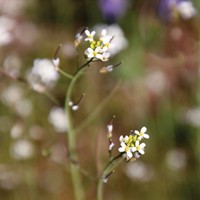Advertisement
Grab your lab coat. Let's get started
Welcome!
Welcome!
Create an account below to get 6 C&EN articles per month, receive newsletters and more - all free.
It seems this is your first time logging in online. Please enter the following information to continue.
As an ACS member you automatically get access to this site. All we need is few more details to create your reading experience.
Not you? Sign in with a different account.
Not you? Sign in with a different account.
ERROR 1
ERROR 1
ERROR 2
ERROR 2
ERROR 2
ERROR 2
ERROR 2
Password and Confirm password must match.
If you have an ACS member number, please enter it here so we can link this account to your membership. (optional)
ERROR 2
ACS values your privacy. By submitting your information, you are gaining access to C&EN and subscribing to our weekly newsletter. We use the information you provide to make your reading experience better, and we will never sell your data to third party members.
Biological Chemistry
Mutant Enzyme Helps Plants Tolerate TNT
Environment: Plants with mutant gene thrive in TNT-laden soil
by Elizabeth K. Wilson
September 3, 2015
| A version of this story appeared in
Volume 93, Issue 35

The explosive TNT generally stunts plant growth and is considered a major, ongoing pollutant near military sites. Now scientists report a genetic mutation that allows the common plant Arabidopsis to thrive even as it uptakes the compound (Science 2015, DOI: 10.1126/science.aab3472).
This discovery could lead to new strategies for phytoremediation, or the use of plants in cleaning up polluted soils, the researchers say.
Elizabeth L. Rylott and Neil C. Bruce at the University of York, in England, and their colleagues found the mutation while studying why plants are sensitive to TNT.
The group found that in Arabidopsis thaliana, a plant commonly used in biological genetic studies, the enzyme monodehydroascorbate reductase 6 (MDHAR6) reduces TNT in the plant’s mitochondria and other organelles. This process forms radicals that easily react with atmospheric oxygen, producing a cascade of harmful reactive oxygen species (ROSs) that lead to stunted root growth, or even plant death.
But as the group screened plants grown in TNT-contaminated media, they found that in some samples, root growth seemed unaffected. This led to the discovery that these plants carried a mutated gene for MDHAR6, which resulted in the truncation of more than one-third of the protein. This defective enzyme doesn’t interact with TNT. Instead, it leaves the compound unreduced and, therefore, inert in plant tissues.
Bruce M. Greenberg, at the University of Waterloo, in Ontario, calls the research “a very interesting and excellent piece of work.” He says the revelation of MDHAR6’s role in reducing TNT, and subsequent ROS production, is of particular importance for understanding the toxicology of the explosive in plants.
The work “identifies a promising alternative strategy for making plants more resistant to this compound,” says Graham Noctor, at France’s Institute of Plant Sciences, Paris-Saclay, in a perspective accompanying the report. Furthermore, he says, researchers could find new herbicides by looking for other compounds that interact with MDHAR6 in plants.
This article has been translated into Spanish by Divulgame.org and can be found here.





Join the conversation
Contact the reporter
Submit a Letter to the Editor for publication
Engage with us on Twitter